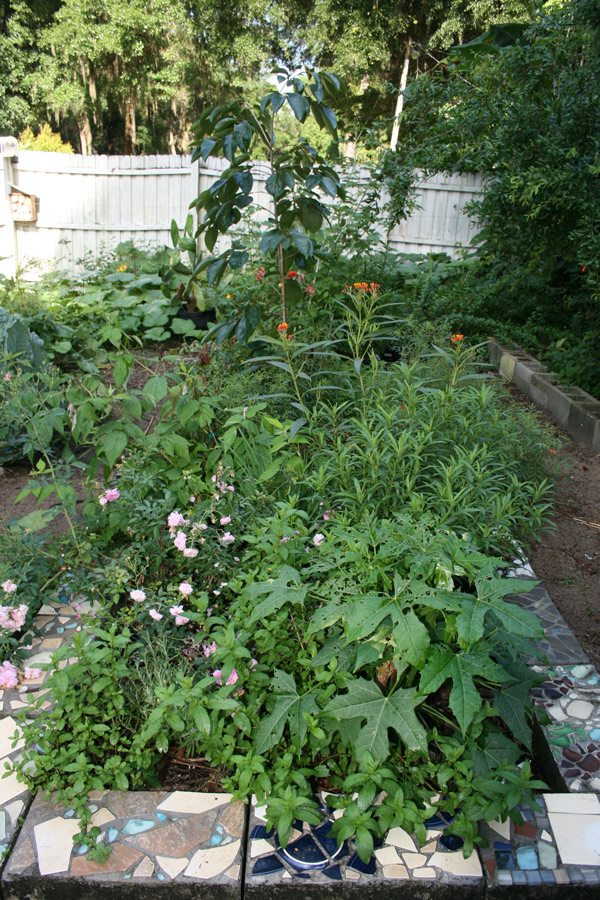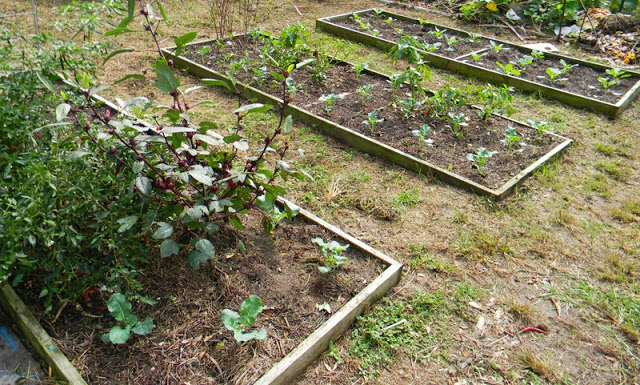Ah… now it feels like summer! Of course, it feels like summer a lot around here, thank God! Give me lemonade, a hammock and a cigar and all is well with the world.
Have you seen any lubbers yet? They’re the adorable little black and orange-red grasshoppers you’ll find in many Southern yards this time of year – also known as Romalea guttata. Don’t let their dopey movements, cute coloration and slow speed fool you… lubbers are eating machines. As the nymphs grow into adults, they lose their black coloring and become 2.5-3” long, multicolored Death Locusts. If you don’t kill them, they can do a lot of damage. Handpicking and drowning in soap water works well (or, alternately, you can stomp, burn, shoot, slingshot, freeze, incinerate, or fire them from a cannon). Unlike most other locusts and grasshoppers, lubbers are NOT edible. So, despite their undoubtedly high protein content, making kebabs is an unacceptable way of removing this pest from your yard.
Keep watering your trees and shrubs. If your plants are wilting, they’re overstressed. By the time plant leaves lose their turgidity, it’s long past watering time. Water sensibly and use drip irrigation if possible. Sprinklers lose a lot of water to evaporation (even though kids love
them). Making little dirt basins around new trees is a good idea because it allows you to flood the root zones. Fill a bucket from your rain barrel and pour it in… voila!
them). Making little dirt basins around new trees is a good idea because it allows you to flood the root zones. Fill a bucket from your rain barrel and pour it in… voila!
How are your azaleas looking? Probably pretty darn boring right now. However, if you want to do some shaping now, go ahead. You have
until roughly October before next year’s buds begin to form, so hack away. And remember, they love acid soils so pine needles, mulch and oak leaves are all good azalea additions.
until roughly October before next year’s buds begin to form, so hack away. And remember, they love acid soils so pine needles, mulch and oak leaves are all good azalea additions.
Since I started off with a look at a poisonous grasshopper,
did you know we are also the home of America’s most poisonous snake? The Coral Snake, though rare and non-aggressive, has a potent neurotoxic venom. And along with that, we also have America’s most poisonous spider, the Black Widow. In fact, I have one in a jar at my house right now, caught in a field just a few miles from where I live. Interestingly, one of the most toxic plants in the world is also in Florida, though it isn’t a native. The Rosary Pea, a plain-looking climbing vine, produces beautiful brilliant red and black seeds that we used to call “ladybug eggs” when I was a kid. There seeds are where the toxin is located. I collected a few specimens in South Florida a couple of months ago. Just one pea, if chewed, is fatal. If you see them growing in your
yard, watch out. Isolated populations are apparently here in the county, though they’re much more common down south. A more likely source of poisoning for children or pets is the lovely Oleander tree – which is terribly toxic.
did you know we are also the home of America’s most poisonous snake? The Coral Snake, though rare and non-aggressive, has a potent neurotoxic venom. And along with that, we also have America’s most poisonous spider, the Black Widow. In fact, I have one in a jar at my house right now, caught in a field just a few miles from where I live. Interestingly, one of the most toxic plants in the world is also in Florida, though it isn’t a native. The Rosary Pea, a plain-looking climbing vine, produces beautiful brilliant red and black seeds that we used to call “ladybug eggs” when I was a kid. There seeds are where the toxin is located. I collected a few specimens in South Florida a couple of months ago. Just one pea, if chewed, is fatal. If you see them growing in your
yard, watch out. Isolated populations are apparently here in the county, though they’re much more common down south. A more likely source of poisoning for children or pets is the lovely Oleander tree – which is terribly toxic.
Now that your head is full of poisonous grasshoppers, snakes, spiders and plants, enjoy the rest of May and be happy you don’t live in Australia. Don’t even get me started on the incredible diversity of
dangerous animals there. Go plant something safe and hopefully tasty… and I’ll catch you next month.
dangerous animals there. Go plant something safe and hopefully tasty… and I’ll catch you next month.
For more information on Florida gardening, check out my book Totally Crazy Easy Florida Gardening.


